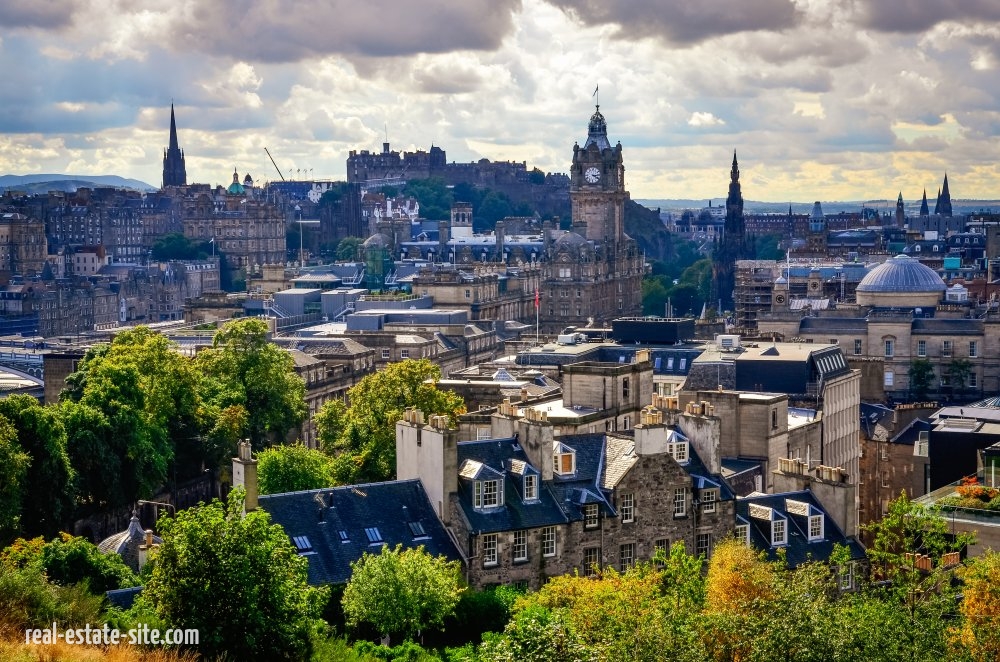The Edinburgh real estate market is a dynamic and multifaceted sector, reflecting the city’s rich history, cultural significance, and economic vibrancy. As Scotland’s capital, Edinburgh attracts a diverse range of buyers and investors, drawn by its unique blend of historic charm and modern amenities. This overview explores the various factors influencing the market, including property types, demand drivers, price trends, and future outlook.
Historical Context and Market Evolution
Edinburgh’s real estate market has evolved significantly over the years, shaped by its historical and cultural heritage. The city’s architectural landscape is a testament to its rich history, with Georgian and Victorian buildings standing alongside contemporary developments. This blend of old and new offers a wide range of properties, from traditional tenements and townhouses to modern apartments and luxury homes.
The city’s real estate market has historically been resilient, benefiting from its status as a UNESCO World Heritage Site and its appeal as a global cultural hub. Major events like the Edinburgh Festival and the city’s strong academic institutions, including the University of Edinburgh, have consistently attracted both domestic and international interest.
Market Demand and Demographics
Demand in the Edinburgh real estate market is driven by several key factors. The city’s robust economy, bolstered by sectors such as finance, tourism, education, and technology, ensures a steady influx of professionals and families seeking housing. Additionally, Edinburgh’s reputation as one of the most desirable places to live in the UK, due to its high quality of life, excellent healthcare, and education systems, continues to attract new residents.
The demographic profile of buyers is diverse, ranging from young professionals and first-time buyers to families and retirees. There is also significant interest from international buyers and investors, particularly those from Europe, North America, and Asia, looking to invest in a stable and attractive market.
Property Types and Popular Areas
Edinburgh offers a wide variety of property types to suit different preferences and budgets. In the city center, areas such as New Town and Old Town are highly sought after for their historic architecture and proximity to cultural attractions. These areas typically feature Georgian and Victorian properties, characterized by their spacious layouts and period features.
Leith, a vibrant and increasingly popular area, offers a mix of traditional tenements and modern waterfront developments. Known for its eclectic mix of cafes, restaurants, and cultural venues, Leith attracts young professionals and creatives.
Suburban areas like Morningside, Stockbridge, and Murrayfield appeal to families due to their excellent schools, green spaces, and community feel. These neighborhoods offer a range of property types, including terraced houses, semi-detached homes, and detached villas.
For those seeking luxury properties, areas such as The Grange, Marchmont, and Inverleith offer expansive homes with large gardens, often located near some of the city’s top schools and recreational facilities.
Price Trends and Affordability
The Edinburgh real estate market has experienced consistent price growth over the past decade, driven by high demand and limited supply. According to recent data, the average property price in Edinburgh is higher than the Scottish average, reflecting the city’s desirability. However, price growth has shown signs of moderating in recent years, partly due to broader economic uncertainties and market corrections.
Affordability remains a challenge for many, particularly first-time buyers. The city has seen initiatives aimed at addressing this issue, including government-backed schemes and affordable housing projects. Despite these efforts, the gap between wages and property prices continues to be a concern for many residents.
Future Outlook and Investment Potential
The future outlook for the Edinburgh real estate market remains positive, underpinned by the city’s strong economic fundamentals and ongoing investment in infrastructure and development. Major projects, such as the Edinburgh St James Quarter, are expected to enhance the city’s appeal and drive further demand.
Sustainable and green developments are becoming increasingly important, with both buyers and developers focusing on energy efficiency and environmentally friendly building practices. This trend is likely to continue, aligning with broader global shifts towards sustainability.
For investors, Edinburgh offers compelling opportunities, particularly in the rental market. The city’s large student population and transient workforce ensure a steady demand for rental properties. Buy-to-let investments, particularly in central and well-connected areas, can offer attractive yields.
In conclusion, the Edinburgh real estate market is characterized by its rich history, diverse property offerings, and robust demand. While challenges such as affordability and economic uncertainties exist, the market’s strong fundamentals and ongoing developments position it well for future growth. Whether for residential buyers, investors, or developers, Edinburgh continues to be an attractive and vibrant market with significant potential.

